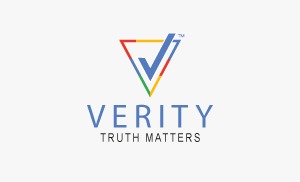
Understanding Carbon Credits: A Key Tool in the Fight Against Climate Change
In the quest to mitigate the impacts of climate change, carbon credits have emerged as a pivotal market-based mechanism aimed at reducing greenhouse gas emissions. At Verity One, where truth and transparency are paramount, we delve into the intricacies of carbon credits, highlighting their significance, operation, and the debates surrounding their effectiveness.
The Essence of Carbon Credits
Carbon credits represent a quantifiable measure of greenhouse gas emissions, translating each metric ton of carbon dioxide (or its equivalent in other gases) emitted into a tradable permit. This innovative approach assigns a tangible value to emissions, fostering a market where these credits can be bought and sold. The principle underlying carbon credits is straightforward yet impactful: incentivizing organizations and companies to reduce greenhouse gas emissions.
How Carbon Credits Work
The framework for carbon credits involves setting a cap on allowable greenhouse gas emissions by governments or international bodies. Entities are then motivated to stay below these limits to sell excess credits or purchase additional ones to comply with their emission targets. This cap-and-trade system not only cultivates a competitive market for carbon credits but also encourages proactive efforts in reducing emissions.
Generating Carbon Credits
Activities aimed at diminishing greenhouse gas emissions contribute to generating carbon credits. Whether it’s through afforestation projects or investments in renewable energy, these initiatives can earn carbon credits, subject to rigorous independent verification to confirm their effectiveness in emissions reduction.
The Carbon Credit Market
Carbon credits are traded across various platforms, including the European Union Emissions Trading System (EU ETS), the California Cap-and-Trade Program, and the United Nations Clean Development Mechanism (CDM). Supply and demand dynamics influence the pricing of these credits, with fluctuations reflecting the balance between available credits and the market’s needs.
The Debate on Carbon Credits
While carbon credits are widely recognized for their potential in climate change mitigation, they are not without controversy. Critics highlight the risks of "greenwashing," where entities might ostensibly lean on carbon credits to offset emissions without genuine reduction efforts. There are also concerns regarding the cost and complexity of managing carbon credit systems.
The Role of Carbon Credits Moving Forward
Despite these challenges, carbon credits remain a crucial component in the arsenal against climate change. They offer a pathway for entities to assume responsibility for their emissions and to support projects that have a tangible impact on reducing greenhouse gas emissions. As the urgency to address climate change intensifies, carbon credits are expected to play a vital role in the global transition towards a low-carbon economy.
At Verity One, we believe in the power of informed choices and the importance of innovative solutions like carbon credits in our collective fight against climate change. Companies and organizations can contribute significantly to a sustainable future by understanding and participating in the carbon credit market, underscoring our commitment to truth and the planet’s well-being.